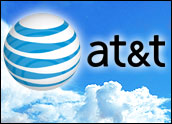
AT&T is one of the most successful and best-known brand names in the wireless and telecom industry and, in fact, in the entire world. So why do customers dislike it so much? That’s the question Esther Lee thinks about every day.
Esther Lee is vice president of brand marketing and advertising for the company. Her job is to help customers love the AT&T brand. And right now it’s an uphill battle.
Then, in my Pick of the Week, I’ll tell you something that I heard this weekend listening to Leo Laporte The Tech Guy on the radio. You’ll be as amazed as I was.
The Ma of all Bells
I have written about the growing problem at AT&T several times over the last few years. I am very happy to see it now both recognizes it has a problem and is trying to solve it. While the solution is not yet working, this is at least a beginning.
AT&T has one of the best-known brand names in business. It has been around for well over a century. You remember the story of Alexander Graham Bell. That’s where the “Bell” in Bell System came from. It was always baseball, apple pie, Coca Cola and AT&T. Ma Bell. It was always part of our American culture.
The problem is, customers don’t love it any longer. In fact, in many cases, customers don’t even like it. So what is AT&T doing wrong, and what are they doing about it?
Sure, they have gazillions of customers and continue to grow rapidly, but the company has changed over time and customers as well as workers have valid complaints. This must be fixed.
First, we have to remember that this company called AT&T is not really the company we think it is. The original AT&T is gone. This is actually SBC, the baby bell from San Antonio, Texas. AT&T the long-distance giant was dying 10 years ago.
This smallest baby bell acquired AT&T and took its name. In fact, it also acquired AT&T Wireless, Bellsouth and Cingular a few years ago and has been wrestling with this growing problem of customer dissatisfaction ever since.
I remember after the acquisitions — SBC executives called me to ask my opinion about which name to use going forward. I said there was no choice. AT&T has the history. It has the emotional connection to the customer. It is America. It just has to be modernized for the next generation.
Early on, things looked good. They changed the logo and focused on the brand and image. I was proud of the job they were doing. Then they fell off the track several years ago. They focused on the investor and not on the worker or the customer.
And over the next several years, this focused giant lost its emotional connection to all of us. That was the beginning of the problems the company faces today.
Connection Maker
That’s where Esther Lee enters the picture. She battles this problem and helps AT&T win customers’ hearts with marketing.
She is trying to move away from the hard sell and toward connecting with customers on a more personal and emotional level.
That sounds like a great plan. That personal connection is the secret of successful companies. That is what I have been talking about for years.
AT&T’s new, softer position is that it is not in telecom. Instead it’s helping customers connect. Sounds warm and fuzzy doesn’t it? So far, so good.
She told Advertising Age their grand platform over the last year and a half is relentless innovation for human progress. OK. That is not as personal and emotional as I thought, but it’s a good start.
Let me help translate. I think it’s simply trying to tell us it cares, trying to put a warm, human face on a large and cold company. Just like the personal connection of Ma Bell in the good old days, right?
If it can do this correctly, I think this is exactly the kind of thinking AT&T needs right now. Will it be successful? That is the million-dollar question.
The problem is it’s mixing warm and fuzzy with cold and technical. What do I mean? They describe this new warm and fuzzy plan as “digital intimacy.” Oh really. Digital intimacy? What’s that mean exactly?
Can you imagine using that language on your husband or wife? If your child said that, you would wash their mouth out with soap, wouldn’t you?
Digital intimacy may sound good in a boardroom, but this does not translate and connect with customers or workers. It does not make you see AT&T as a warm and fuzzy friend like Ma Bell. Not by a long shot. Instead it’s like an awkward teenager or a bull in a china shop.
Don’t Ignore the Workers
AT&T has the same problem with both customers and workers. It’s so large and its workers come from different companies with many different cultures. Today, AT&T workers feel totally uncared for and disconnected. They suddenly feel like they now work for a cold and heartless giant. And in fact, they do.
What is a company? It is built and run by people. So it’s as warm and fuzzy or as cold and calculating as they make it. And that direction comes from the top. There is nothing wrong with warm and fuzzy. Some are very successful. Think of Apple. Sure Steve Jobs may have been tough, but he and Apple understood the value of building relationships.
Solving this problem with the workers is the first steps. They can then solve the problem with customers. Then good marketing will help put the frosting on the new cake. AT&T needs to reverse the system, and then it can be fixed. Focusing on the customer is good, but ignoring the workers short-circuits the entire effort.
With that said, I am glad it’s now starting to think in this right direction. I don’t blame Esther Lee for this problem. She inherited a giant ship’s marketing problem that she needs to turn around.
I think she is trying has hard as she can to bridge the real world and real needs of real customers, with the cold and huge company. However the problem is deeper. “Digital intimacy” are code words.
AT&T needs to start using real, warm language. Think of all the successful advertising and marketing AT&T had in the past. It gave you goose bumps. That is what AT&T needs more of today.
The problem is it’s trying to bridge that gap using messaging that’s cold and heartless. It defeats the entire effort.
Success in this area is more than just messaging. Messaging is just the frosting on the cake. Important, but will not do it alone. AT&T has to remake the cake under the frosting too.
May I make a suggestion? Think back. Think of Ma Bell. Think about America. Think about the connection with the customer. Think about all the good marketing AT&T was known for. What does all that mean?
Doesn’t that feel warmer and better? It’s personal. Isn’t that what you want to achieve? Now compare that to “digital intimacy.” If you see the difference and really understand it, you are on the right path to correcting the problem.
Branding is not all about cold business. It’s all about building the emotional connection with the customer and the marketplace.
That is the basic key message I want to make here. Once AT&T understands the cake and the frosting, it will be on the right path toward making close personal friends with customers and workers. And THAT will solve their growing problem. uses one third of all Internet traffic. What?
That’s right. We may send a gazillion emails, text messages, use Twitter, FaceBook and YouTube, watch video clips, listen to music and so many other things.
However, Netflix still uses 1/3 of all Internet traffic. Incredible.
And that’s today. As Netflix continues to grow and to transition from DVDs to online streaming, they will gobble up even more of the Net.
The good part for Netflix is they don’t pay for these highways they are building their business on. The bad part is we do. It’s like paying more each month for cable TV because of ESPN even if you don’t watch ESPN.
Leo said the Internet was not designed for that much video downloading or streaming. I agree. But what are we going to do about it? The Net will have to keep bulking up just to handle this traffic. And it will. Until eventually, some day, it crashes.
I don’t think this will get the attention of the mainstream until that happens. Until then we can just watch this awesome growth for both Netflix and video streaming in stunned amazement.
With all the problems Netflix has had lately, I just wanted to say great job.
























































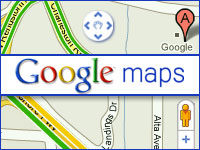





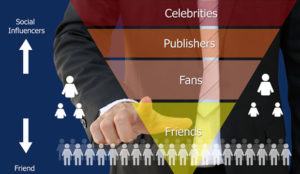
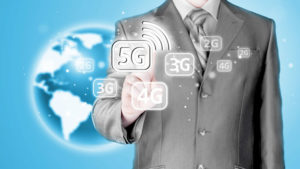



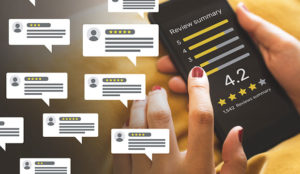
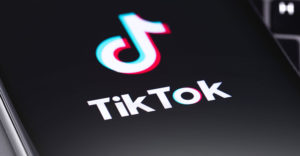




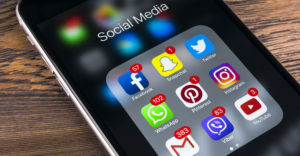


Social Media
See all Social Media